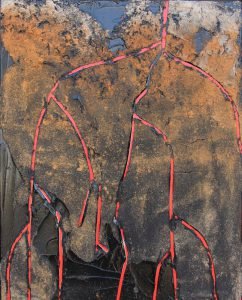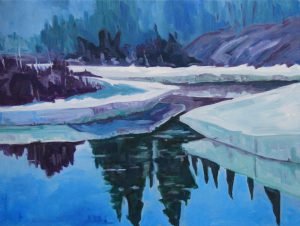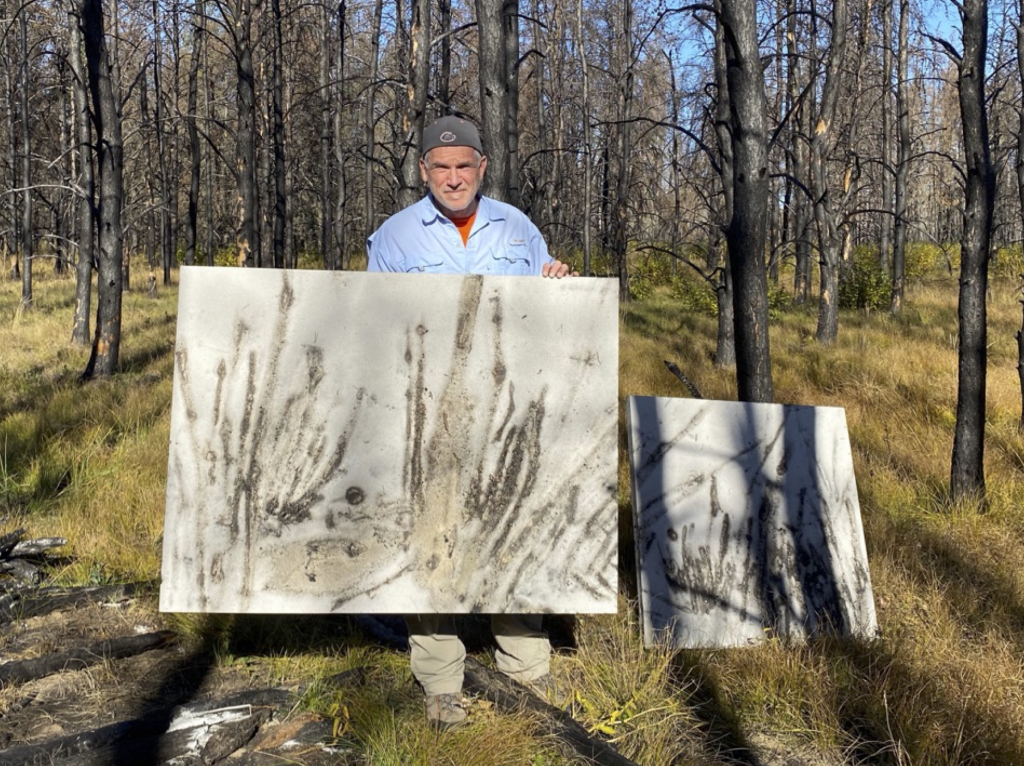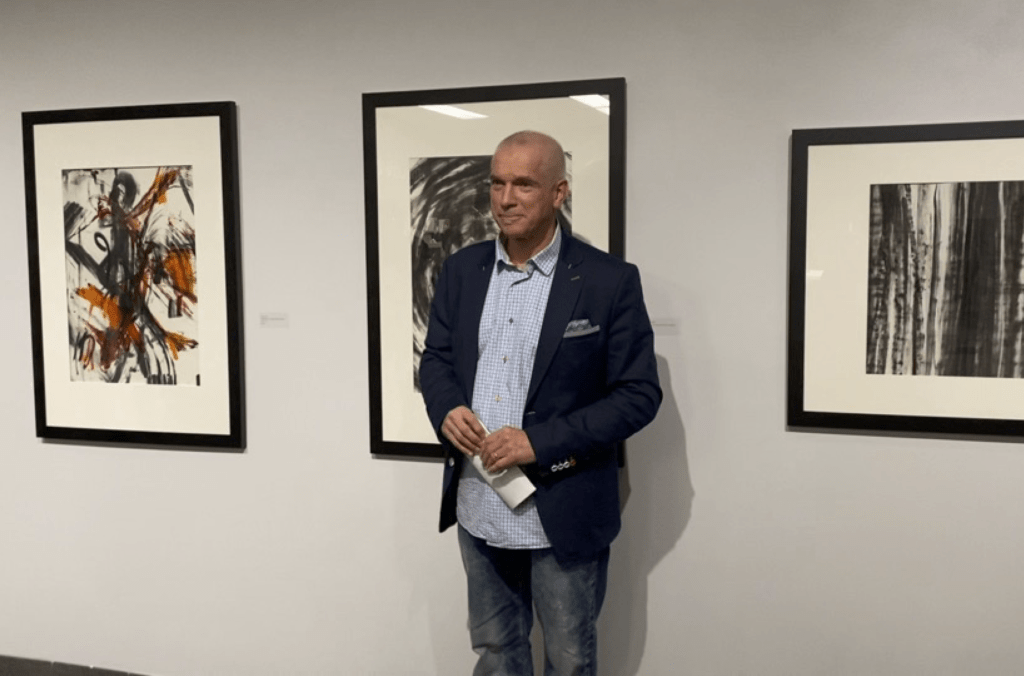
Ken Van Rees (Ph.D. `89) retired from the University of Saskatchewan as a professor of forest soils in 2021. After spending more than three decades teaching and conducting research, the now-professor emeritus did not have to wonder about filling his time outside of the classroom. Since 2004, Van Rees has been using the tools of an artist as well as a pedologist, going from soil scientist to soil artist.
You can read the story of the “epiphany” he had while standing in an Ontario-area art gallery on his website, here, and how he cautiously incorporated art into a soil field course. Nearly 20 years later, Van Rees is an accomplished plein air painter who has exhibited his work in different parts of Canada. He also is one of the Men Who Paint, a group of artists who get together to paint their landscapes outside.
“I enjoy looking at the various landscapes and trying to understand the processes that made them what they are today,” Van Rees explained, “but the greatest excitement is trying to capture them on canvas whether it is during the morning sunrise or standing in the silence as the snowflakes flutter around you.”

Soil Art
With his deep knowledge of soil, he also wanted to incorporate that into his art. With an interesting soil profile in front of him, Van Rees would press a small canvas thick with paint into the soil for a mixed-media effect. He and his students also created finely-ground pigments with different colored soils that were ready for the canvas.
“In 2012, I taught a course at the University of Saskatchewan’s Emma Lake Kenderdine Campus with Allyson Glenn and Symeon van Donkelaar on using soil, bones, and plant material to create pigments for painting,” Van Rees said. “There were five graduate soil science students and five MFA students thrown together and it was exciting to see the interactions between art and science!”
Charcoal Art
More recently, Van Rees has focused on charcoal art. It started when a fire burnt a research plot where he was studying an aspect of carbon dynamics. As he was checking the damage done to his equipment, he noticed something. There were interesting patterns that the charred remains left on his clothes.
“It started as a research program investigating the dynamics of root growth and carbon biomass of boreal species. It has turned into a treatise with the burnt landscape to understand this new configuration of black carbon,” he explained. “Trees don’t all burn with the same intensity or severity, or even remain standing. This results in different textures, patterns, and sounds.”
Van Rees was left with more questions than answers: Where does all this black carbon go; does it disappear, get repurposed or remain permanently in the landscape? How do you capture this black carbon to represent fire-impacted landscapes?
“My artistic interaction with these burnt charcoal remnants is based on scientific research methodology; where I observe, create hypotheses, and test them with various experiments using a range of mediums at different spatial and temporal scales.”
His experimentation involved meandering through the forest with paper and canvas taking charcoal marks from burnt trees. Another method is leaving canvas on the burnt forest floor covered in charcoal logs to determine the effect of time and environment on charcoal breakdown and movement.
“In the end, this collaborative interface results in burnt trees contributing the charcoal on my canvas to create a deeper exchange about these transformed forests.” Van Rees said.


You can view more paintings by Ken Van Rees on his website: www.kenvanrees.com
 0
0
